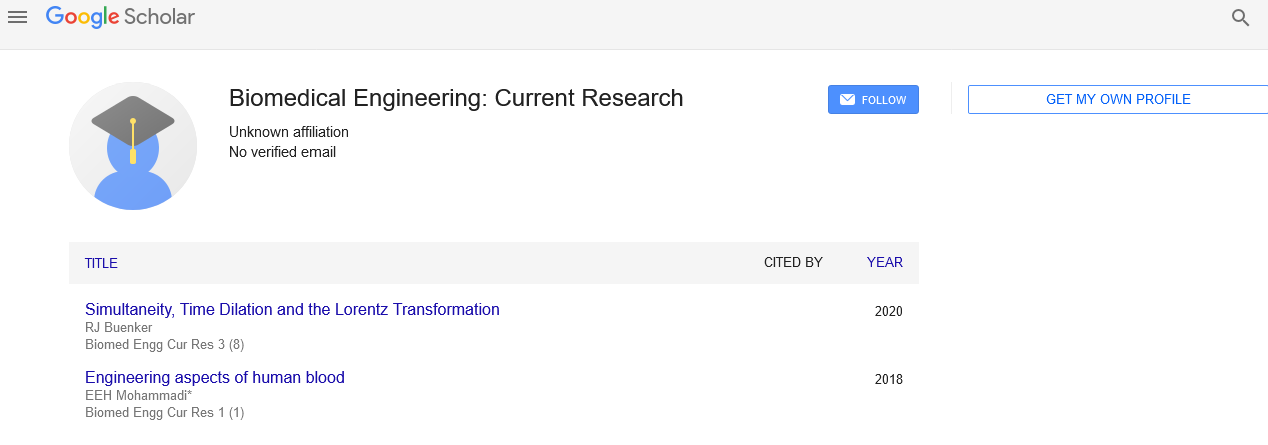Medical imaging and their features
Received: 05-Aug-2022, Manuscript No. pulbecr-22-5603; Editor assigned: 07-Aug-2022, Pre QC No. pulbecr-22-5603 (PQ); Accepted Date: Aug 27, 2022; Reviewed: 21-Aug-2022 QC No. pulbecr-22-5603 (Q); Revised: 22-Aug-2022, Manuscript No. pulbecr-22-5603 (R); Published: 28-Aug-2022, DOI: DOI:10.37532/PULBECR .2022.4(4).29
Citation: Matthew M. Medical imaging and their features. J Biomed Eng: Curr Res. 2022;4(4):29.
This open-access article is distributed under the terms of the Creative Commons Attribution Non-Commercial License (CC BY-NC) (http://creativecommons.org/licenses/by-nc/4.0/), which permits reuse, distribution and reproduction of the article, provided that the original work is properly cited and the reuse is restricted to noncommercial purposes. For commercial reuse, contact reprints@pulsus.com
Abstract
Open-source toolkits that have been carefully created are emerging to advance medical imaging. For the algorithmic realm of medical imaging, particularly for segmentation and registration, the Insight Toolkit (ITK) offers this. However, to be effective, medical imaging algorithms must be used in clinical settings, which necessitates additional visualization and interaction. Although the Visualization Toolkit (VTK) offers strong visualization capabilities, interactivity support is only at a low level. Toolkit for Medical Imaging Interaction (MITK). With the help of MITK, creating custom, interactive applications for medical picture processing should become substantially easier. MITK enhances these two toolkits with those capabilities that are outside the scope of both and makes it simple to combine algorithms built by ITK with visualizations created by VTK. The primary man-made source of radiation exposure is the employment of radiation in diagnostic and therapeutic procedures. In milliSieverts, the biological impact of the radiation dose received is expressed (mSv). The United Nations' most recent estimate states that 2.4 mSv/year on average come from natural sources. 1 Nearly 50% of the natural radiation in most developed nations came from medical sources, and nearly 100% of the natural radiation in the majority of wealthy nations.
Key Words:
Medical imaging; Imaging; Visualization
INTRODUCTION
The fact that clinical application is necessary for medical imageanalysis algorithms to be successful or even relevant is becoming increasingly clear. Due to the complexity of clinical settings, an algorithm's effectiveness in testing on (a few) test datasets does not imply that it would be successful in a real routine environment. Operational planning systems, for example, are clinically applicable tools for medical image analysis that typically include a pipeline of algorithms, along with visualization components to show and validate the results and opportunities to interact with the data.
Few clinicians are aware of the radiation exposure that their patients experience during radiological tests. This is due, among other things, to the difficulty in locating and comprehending fundamental radiological information. Understanding the dose and the hazards associated with procedures is challenging for academics as well as doctors due to the ambiguous and non-standardized terminology. As a result, raising physician awareness of radiology should be a top goal in both the medical and social spheres. The MITK, in contrast, is a toolbox rather than an application. Thus, MITK enables the development of apps specifically suited for a medical image analysis task, offering the user (physician) exactly the characteristics they need. The toolkit's compatibility with existing software is another perk. Additionally, MITK handles a number of issues that are not addressed by any of the applications discussed above, such as a general idea for interactions that may be undone and redone.
CONCLUSION
There is more to medical image analysis than mere algorithms. The visualization of the raw data from the original image and the results of the processing, as well as interaction with the data, are crucial. Medical imaging algorithms from ITK are particularly effective for segmentation and registration, and VTK provides effective visualization techniques, notably for 3D visualization. However, many views of the data, including multiple 2D displays (MPR views), are helpful for medical image analysis, and VTK does not support these views as effectively as it does 3D visualizations. Furthermore, VTK does not support more advanced interaction techniques like interaction undoing and redoing, or run-time data management, both of which are necessary for user-friendly interactive applications.





